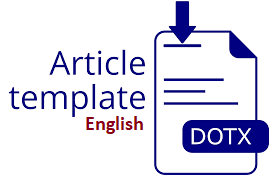Analisa Manajemen Risiko Sistem Informasi Perpustakaan Menggunakan Metode Failure Mode Effect and Analysis (FMEA)
DOI:
https://doi.org/10.30865/klik.v3i6.867Keywords:
Risk Management; Library; Risk Assessment; FMEA; INLISLiteAbstract
Public libraries that have implemented information technology in their business processes have a great responsibility in service and management because the visiting users are the general public. In implementing information technology, maintaining the security of user data, members, resources, and library information is very important. Digital libraries must have consideration of the risks and threats that may occur. The risks and threats that can occur are as follows server damage, hardware damage, staff negligence, loss, and natural disasters. The purpose of this research is to analyze risk management by identifying risks and measuring the level of risk from one of the Riau Province Library and Archives Services which already uses a library automation system, namely INLISLite. The method used to identify and assess risk is the Failure Mode Effect and Analysis (FMEA) method. Risk assessment is based on calculating the value of the Risk Priority Number (RPN) resulting from multiplying the level parameters severity, occurrence, and detection. Risk assessment is carried out based on the category list of asset components that support the running of the system, namely, hardware, software, data, people, and network. From the calculations that have been carried out, there are six categories of RPN levels, namely 1 score at a very high level, 3 scores at a high level, 2 scores at a medium level, 16 scores at a low level, and 1 score at a very low level. From the results of the RPN value that needs to be given recommendations for action, namely the RPN value which is at very high and high levels
Downloads
References
R. Chander, M. Dhar, and K. Bhatt, “Bibliometric analysis of studies on library security issues in academic institutions,” J. Access Serv., vol. 19, no. 2–3, pp. 86–104, 2022, doi: 10.1080/15367967.2022.2118058.
S. A. Wulandari, A. P. Dewi, M. Rizki Pohan, D. I. Sensuse, M. Mishbah, and Syamsudin, “Risk assessment and recommendation strategy based on COBIT 5 for risk: Case study sikn Jikn helpdesk service,” Procedia Comput. Sci., vol. 161, pp. 168–177, 2019, doi: 10.1016/j.procs.2019.11.112.
P. N. RI, “Tentang Inlislite Versi 3.” Https://Inlislite.Perpusnas.Go.Id/ (Accessed May 18, 2023).
M. Bugis, “Penerapan Software Inlislite Pada Pengolahan Bahan Pustaka Di Dinas Perpustakaan Dan Kearsipan Daerah Provinsi Sulawesi Utara | Bugis | Acta Diurna Komunikasi,” Acta Diurna Komun., vol. 3, no. 2, p. :, 2021, [Online]. Available: https://ejournal.unsrat.ac.id/index.php/actadiurnakomunikasi/article/view/33449
Zulhalim, A. Sulistyanto, and A. Z. Sianipar, “Implementasi Aplikasi Sistem Otomasi Perpustakaan Terintegrasi Menggunakan Inlislite Versi 3 Pada Perpustakaan Stmik Jayakarta,” JISAMAR (Journal Inf. Syst. Applied, Manag. Account. Researh, vol. 3(4), no. 4, pp. 1–9, 2019, [Online]. Available: http://journal.stmikjayakarta.ac.id/index.php/jisamar
A. Asari, T. Kurniawan, and K. Andajani, “Penerapan Manajemen Perpustakaan Sekolah Berbasis Otomasi Inlislite | Asari | Bibliotika?: Jurnal Kajian Perpustakaan dan Informasi,” BIBLIOTIKA J. Kaji. Perpust. dan Inf. Vol., vol. 4, no. 2, pp. 246–252, 2020, [Online]. Available: http://journal2.um.ac.id/index.php/bibliotika/article/view/17567
Sungadi, “Manajemen Keamanan Informasi Dan Internet,” vol. 3, no. 1, pp. 105–120, 2020.
Z. Han, S. Huang, H. Li, and N. Ren, “Risk assessment of digital library information security: A case study,” Electron. Libr., vol. 34, no. 3, pp. 471–487, 2016, doi: 10.1108/EL-09-2014-0158.
G. B. Newby, “Information Security for Libraries,” Mod. Organ. Virtual Communities, vol. 8064, no. v, pp. 134–144, 2011, doi: 10.4018/978-1-931777-16-2.ch010.
G. Farid, N. F. Warraich, and S. Iftikhar, “Digital information security management policy in academic libraries: A systematic review (2010–2022),” J. Inf. Sci., no. April, 2023, doi: 10.1177/01655515231160026.
Y. S. Triana and R. A. M. Pangabean, “Risk Analysis in the Application of Financore Information Systems Using FMEA Method,” J. Phys. Conf. Ser., vol. 1751, no. 1, 2021, doi: 10.1088/1742-6596/1751/1/012032.
R. R. Putra, “Analisis Manajemen Risiko Ti Pada Keamanan Data E - Learning Dan Aset It Menggunakan Nist Sp 800 – 30 Revisi 1,” JATISI (Jurnal Tek. Inform. dan Sist. Informasi), vol. 6, no. 1, pp. 96–105, 2019, doi: 10.35957/jatisi.v6i1.154.
A. P. Subriadi, N. F. Najwa, B. D. Cahyabuana, and V. Lukitosari, “The consistency of using failure mode effect analysis (FMEA) on risk assessment of information technology,” 2018 Int. Semin. Res. Inf. Technol. Intell. Syst. ISRITI 2018, pp. 61–66, 2018, doi: 10.1109/ISRITI.2018.8864467.
H. M. Astuti, F. A. Muqtadiroh, E. W. T. Darmaningrat, and C. U. Putri, “Risks Assessment of Information Technology Processes Based on COBIT 5 Framework: A Case Study of ITS Service Desk,” Procedia Comput. Sci., vol. 124, pp. 569–576, 2017, doi: 10.1016/j.procs.2017.12.191.
M. Megawati, O. Okfalisa, and M. Alkarim, “Security risk assessment of online fish quarantine information system using FMEA,” AIP Conf. Proc., vol. 2347, no. July, 2021, doi: 10.1063/5.0053584.
A. Leonard, I. Journal, A. Leonard, N. Anggito, F. Sialagan, and J. S. Suroso, “Information System Security Risk Management E-Learning Using FMEA in University,” vol. 9, no. 5, pp. 7565–7568, 2020.
D. Rimantho, D. Rimantho, E. Noor, Eriyatno, and H. Effendi, “Risk Assessment on Failure Factors of e-waste Management Process Using FMEA Method,” Int. J. Adv. Sci. Eng. Inf. Technol., vol. 10, no. 6, pp. 2504–2510, 2020, doi: 10.18517/ijaseit.10.6.7433.
H. D. Stamatis, Failure Mode and Effect Analysis FMEA from Theory to Execution. 2003.
A. P. Subriadi and N. F. Najwa, “The consistency analysis of failure mode and effect analysis (FMEA) in information technology risk assessment,” Heliyon, vol. 6, no. 1, p. e03161, 2020, doi: 10.1016/j.heliyon.2020.e03161.
R. E. McDermott, R. J. Mikulak, and M. E. Beauregard, The Basics of FMEA (2nd ed.), 2nd Editio. 2008. doi: https://doi.org/10.1201/b16656.
E. Brewster, R. Griffiths, A. Lawes, and S. John, IT Service Management. 2009.
D. R. Donaldson and L. Bell, “Security, archivists, and digital collections,” J. Arch. Organ., vol. 15, no. 1–2, pp. 1–19, 2018, doi: 10.1080/15332748.2019.1609311.
R. J. Gagas, I. Syah, and F. Febryanto, “Analisis, Evaluasi, Dan Mitigasi Risiko Aset Teknologi Informasi Menggunakan Framework Octave Dan Fmea (Studi Kasus: Unit Pengelola Teknis Teknologi Informasi Dan Komunikasi Universitas Xyz),” J. Khatulistiwa Inform., vol. 9, no. 2, pp. 121–133, 2021, doi: 10.31294/jki.v9i2.11368.
R. Morgan, “How to Do RACI Charting and Analysis: A Practical Guide,” Retrieved Oct., pp. 1–3, 2008, [Online]. Available: http://www.spanglefish.com/SystemSafetySolutions/documents/Safety-Documents/How-to-do-RACI-Charting-and-Analysis.pdf
Bila bermanfaat silahkan share artikel ini
Berikan Komentar Anda terhadap artikel Analisa Manajemen Risiko Sistem Informasi Perpustakaan Menggunakan Metode Failure Mode Effect and Analysis (FMEA)
ARTICLE HISTORY
Issue
Section
Copyright (c) 2023 Maisarah Assa'diyah, Tengku Khairil Ahsyar, M Afdal

This work is licensed under a Creative Commons Attribution 4.0 International License.
Authors who publish with this journal agree to the following terms:
- Authors retain copyright and grant the journal right of first publication with the work simultaneously licensed under Creative Commons Attribution 4.0 International License that allows others to share the work with an acknowledgment of the work's authorship and initial publication in this journal.
- Authors are able to enter into separate, additional contractual arrangements for the non-exclusive distribution of the journal's published version of the work (e.g., post it to an institutional repository or publish it in a book), with an acknowledgment of its initial publication in this journal.
- Authors are permitted and encouraged to post their work online (e.g., in institutional repositories or on their website) prior to and during the submission process, as it can lead to productive exchanges, as well as earlier and greater citation of published work (Refer to The Effect of Open Access).
















